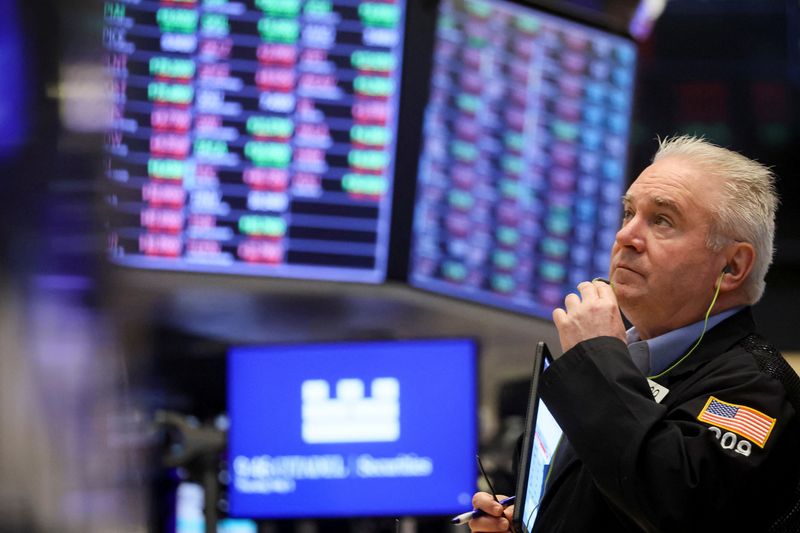Five things to watch in markets in the week ahead
Investing.com -- Reignited U.S.-China trade tensions triggered a sharp risk-off move in global markets on Friday, snapping a strong equity rally and sending investors into safe havens.
The S&P 500 fell 2.7%, breaking a run that had lifted the index more than 15% year-to-date. The sell-off intensified after U.S. President Donald Trump threatened a “massive increase” in tariffs on Chinese imports, with U.S.-listed Chinese American Depositary Receipts (ADRs) dropping close to 7%.
After the close, Trump announced further measures, announcing a new 100% tariff on all imports from China starting 1 November, alongside export controls on “critical software.”
He also said he may cancel a planned meeting with President Xi Jinping following China’s decision to widen export controls on rare earths.
Beijing responded by introducing new port fees on U.S.-linked vessels and launching an antitrust probe into Qualcomm, signalling willingness to widen retaliation beyond trade logistics.
The risk aversion was reflected across asset classes. Bonds rallied, pushing U.S. 10-year and 2-year Treasury yields 8 and 6 basis points lower, while gold rose 1% and the DXY dollar index slipped 0.6%.
To start the week, Asian markets opened lower on Monday, with the Hang Seng and its tech sub-index falling between 1.5 and 2%, while gold futures extended their rally to a new record of $4,089 an ounce.
S&P 500 futures, meanwhile, climbed 1.4%.
While U.S.-China tensions had cooled since the spring, the “underlying strategic rivalry” meant flare-ups remained likely, UBS strategists said.
They said the current dispute could follow the familiar Trump-Xi pattern of “cycles of escalation followed by tactical truces,” with market direction hinging on how far escalation goes.
With China controlling around 70% of global rare earth supply and export data showing a 31% month-on-month drop in September, the strategic leverage remains significant.
Despite the renewed volatility, UBS still sees a full-scale trade war as unlikely, pointing to the upcoming APEC summit in South Korea as a potential off-ramp.
The bank maintains that any significant correction could present a chance to add long-term equity exposure, highlighting that profit growth in the U.S. remains underpinned by resilient consumer spending and capital investment in artificial intelligence.
“Our base case is for 8% earnings per share growth for the S&P 500 this year, and 7.5% next,” the note said.
Strategists continue to advise buying dips, favouring U.S. Tech, Healthcare, Utilities and Financials, alongside European quality stocks and Industrials.
Moreover, they pointed to its TRIOs framework — AI, Power & resources and Longevity — stressing that AI “remains a key driver of market performance” and that continued investment is likely once tariff uncertainty eases.
With policy headlines set to add volatility, the team advises keeping balanced exposure to AI-linked segments while also highlighting power supply constraints and healthcare as opportunity areas within the broader TRIOs theme.
They also reiterated their view that gold “remains an effective portfolio diversifier and hedge against political and economic risks,” supported by central bank demand, lower real rates and a softer dollar.
